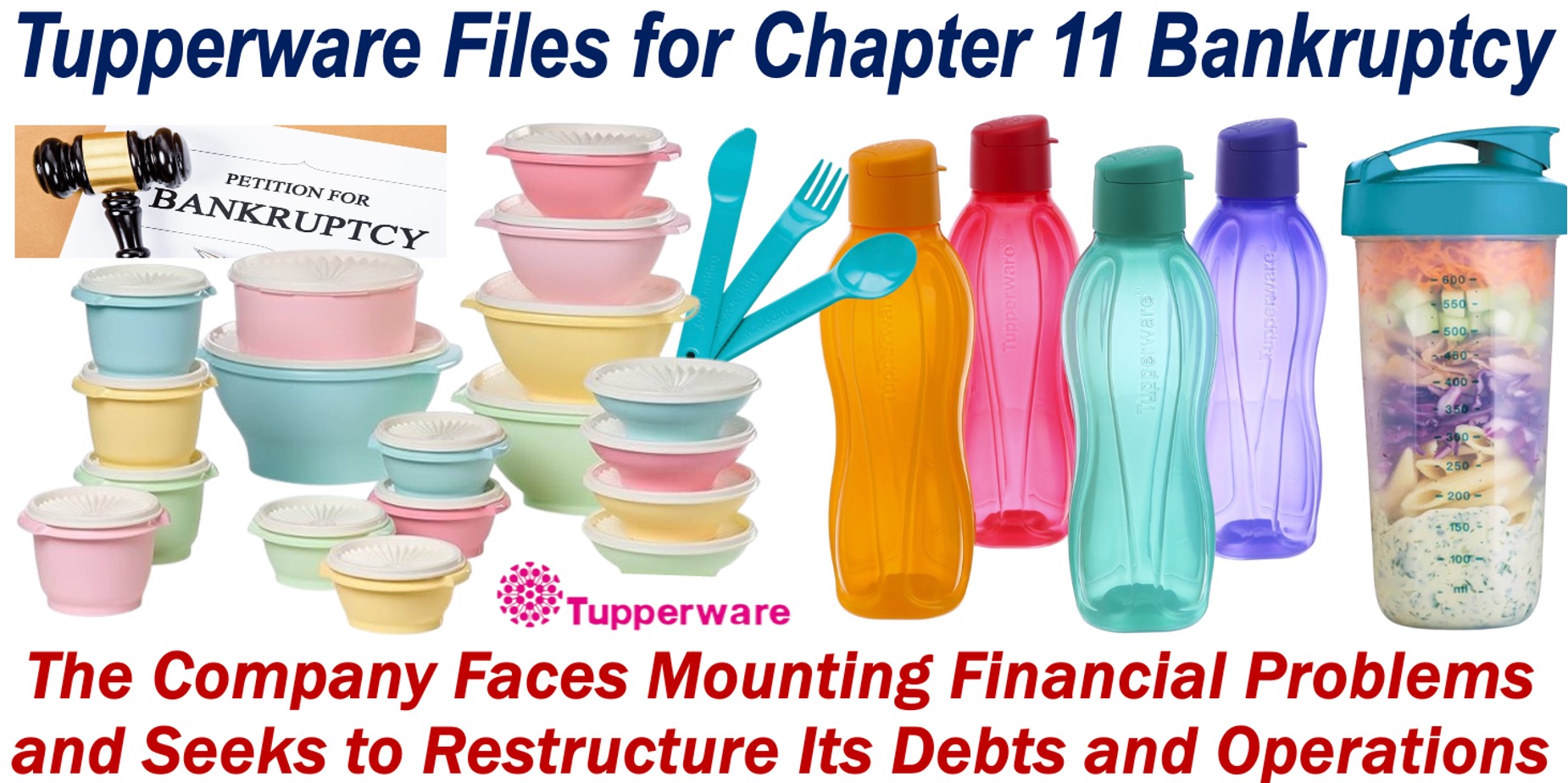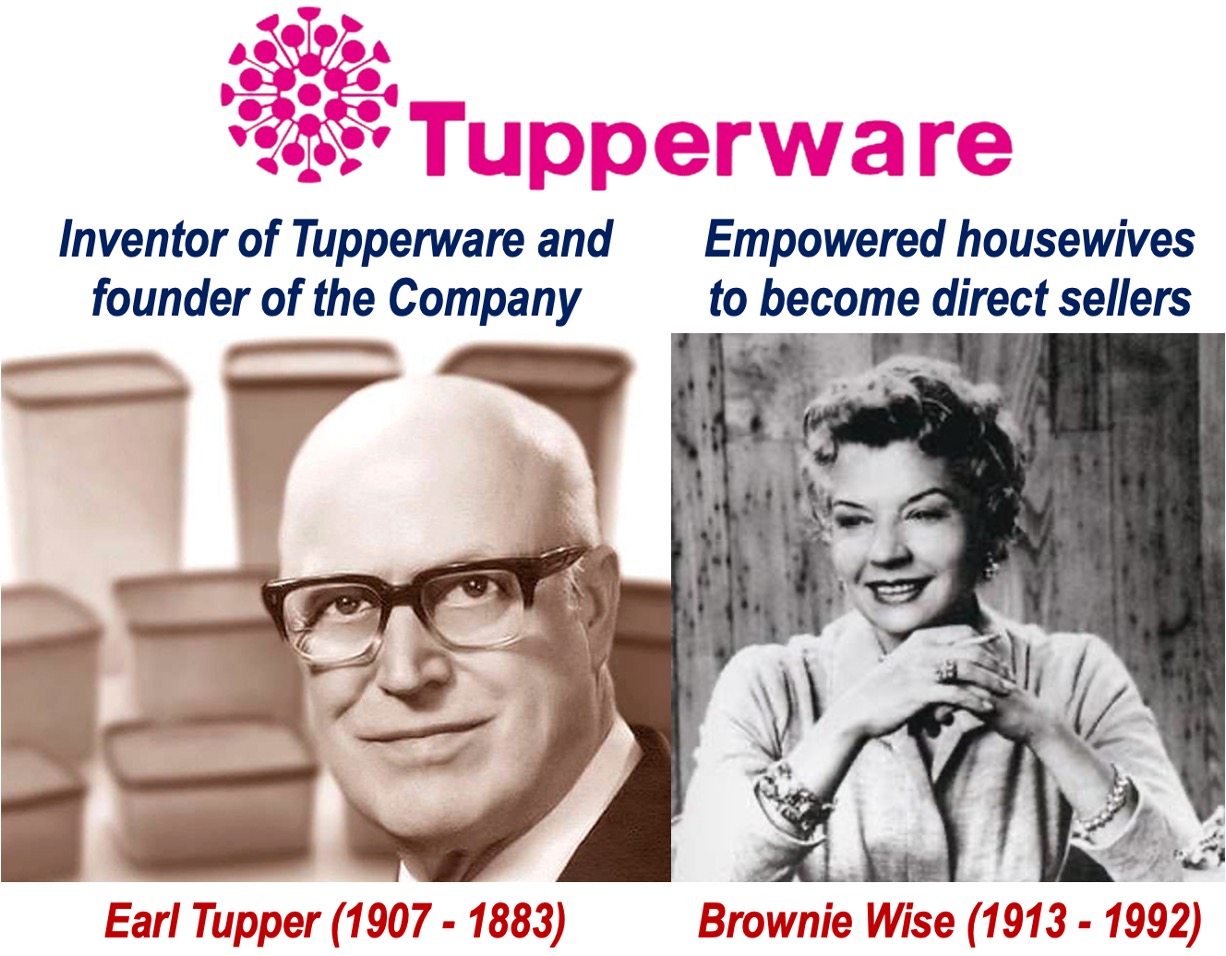Tupperware Brands, a well-known manufacturer of food storage containers, has officially filed for Chapter 11 bankruptcy, marking a significant turn in the company’s decades-long history.
This filing comes as Tupperware faces mounting financial challenges and seeks to restructure its debt and operations.
Reasons for the Bankruptcy
Tupperware has struggled in recent years to adapt to changing consumer preferences and competition from newer brands.
In a press release by the company, Laurie Ann Goldman, President and Chief Executive Officer of Tupperware, said:
“Whether you are a dedicated member of our Tupperware team, sell, cook with, or simply love our Tupperware products, you are a part of our Tupperware family. We plan to continue serving our valued customers with the high-quality products they love and trust throughout this process.”
While the brand became a household name for its innovative food storage solutions, the rise of more modern and convenient alternatives has severely impacted its market share.
The company has been experiencing declining sales and profitability. The COVID-19 pandemic, which drastically changed shopping patterns and supply chain dynamics, also hit Tupperware hard.
Shoppers have increasingly shifted to online retail platforms, and Tupperware’s direct-sales business model, largely dependent on in-person parties, became difficult to maintain.
In its official press release, the company admitted that “continuing supply chain challenges and shifting consumer behavior contributed to the necessity of this decision.”
Efforts to Stay Afloat
Leading up to the bankruptcy filing, Tupperware made several efforts to address its financial problems. These included attempting to expand its digital presence and modernize its product offerings.
Despite these efforts, sales failed to recover sufficiently. A report by CNN highlighted that, while Tupperware managed to generate a significant amount of revenue during its peak, recent years have seen a steep decline, forcing the company to consider drastic measures.
In addition to changing consumer habits, Tupperware’s financial troubles have been exacerbated by rising production costs and increased competition in the food storage and kitchenware market.
Newer brands offering innovative products have gained popularity, making it harder for Tupperware to compete in the modern marketplace.

The Path Forward
Filing for Chapter 11 bankruptcy is a step that allows Tupperware to restructure its debts while continuing to operate.
The company hopes to emerge from bankruptcy with a more sustainable financial plan. As outlined in the company’s official filing, its goal is to reduce debt, improve liquidity, and implement changes that will revitalize the business.
Tupperware remains hopeful that this restructuring will provide an opportunity to regain stability and continue serving customers.
The future of the brand, however, remains uncertain. Chapter 11 bankruptcy provides a temporary reprieve from creditors, but for Tupperware to thrive again, it will need to successfully overhaul its business model and appeal to a new generation of consumers.
Brief Background
Tupperware, which is based in Orlando, Florida, was founded in 1946 by Earl Tupper, an American inventor and entrepreneur. The company is best known for its innovative, airtight plastic containers that revolutionized food storage in households.
Earl Tupper initially developed the product in his home state of Massachusetts, where he sought to create durable, reusable plastic containers that could help preserve food more effectively than traditional methods.

The brand’s unique selling method—Tupperware parties—became a key part of its success. Brownie Wise, a pioneering businesswoman who transformed Tupperware’s sales strategy by empowering housewives to become direct sellers, popularized these gatherings.
The company quickly gained a large following, becoming synonymous with convenience and quality in food storage. Over the decades, Tupperware expanded internationally and became a household name, making a significant impact on the kitchenware industry.
Despite its recent challenges, Tupperware’s legacy as a trailblazer in plastic food storage remains strong.
Final Thoughts
In conclusion, Tupperware’s bankruptcy filing is a reflection of the changing landscape in retail and consumer preferences. Whether the company can adapt and emerge stronger from this process will depend on its ability to innovate and meet the demands of today’s market.
